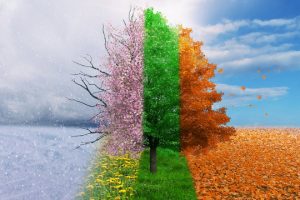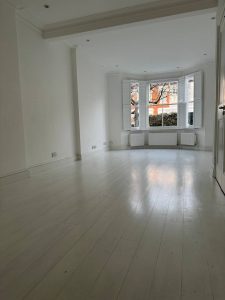Environmental Impact of Floor Sanding
![]()
Floor sanding is an essential process for maintaining and restoring the beauty of wooden floors, but it can also have significant environmental impacts. Understanding these impacts and adopting strategies to mitigate them can help homeowners in London make more eco-friendly choices. Here’s a comprehensive guide on the environmental impact of floor sanding and how to reduce it.
Understanding the Environmental Impact
Dust and Air Quality
- Dust Generation: Sanding floors produces a large amount of fine dust, which can affect indoor air quality and contribute to respiratory issues.
- Airborne Particles: These particles can remain suspended in the air and spread to other areas of the home, impacting overall air quality.
Chemical Emissions
- VOCs: Many traditional floor finishes, stains, and sealants contain volatile organic compounds (VOCs), which release harmful chemicals into the air during application and drying.
- Health Hazards: High levels of VOCs can cause health problems, including headaches, dizziness, and long-term respiratory issues.
Waste Generation
- Wood Waste: Sanding generates wood waste, including dust and discarded finishes.
- Chemical Waste: Improper disposal of leftover finishes and solvents can harm the environment.
Mitigation Strategies for Dust Control
Dust-Free Sanding Equipment
- Advanced Sanding Machines: Use modern sanding equipment with integrated dust collection systems. These machines capture up to 99% of the dust produced, significantly reducing airborne particles.
- HEPA Filters: Employ sanders with HEPA filters to trap fine dust particles and prevent them from circulating in the air.
Containment Measures
- Seal Off Work Areas: Use plastic sheeting to seal off the sanding area from the rest of the home, preventing dust from spreading.
- Frequent Cleaning: Regularly vacuum and clean the work area using a vacuum with a HEPA filter to remove dust and debris.
Reducing Chemical Emissions
Low-VOC and Water-Based Finishes
- Eco-Friendly Products: Choose finishes, stains, and sealants that are low in VOCs or water-based. These products emit fewer harmful chemicals, improving indoor air quality and reducing health risks.
- Natural Oils and Waxes: Opt for natural oil and wax finishes derived from sustainable sources. These products are biodegradable and have minimal environmental impact.
Proper Ventilation
- Air Circulation: Ensure good ventilation during and after the application of finishes. Open windows and use fans to help disperse fumes and speed up drying times.
- Air Purifiers: Consider using air purifiers with activated carbon filters to absorb VOCs and other chemical emissions.
Managing Waste Responsibly
Minimize Waste
- Accurate Measurements: Measure the exact amount of finish needed to avoid excess and reduce waste.
- Reuse Materials: Reuse sandpaper and other materials when possible, and donate any leftover products to community projects or recycling centers.
Proper Disposal
- Hazardous Waste Disposal: Dispose of chemical waste, such as finishes and solvents, at designated hazardous waste disposal sites. Never pour them down the drain or throw them in regular trash.
- Wood Dust Disposal: Collect and dispose of wood dust properly. It can be composted or used in garden mulch if free from harmful chemicals.
Sustainable Flooring Choices
Reclaimed Wood
- Eco-Friendly Option: Use reclaimed wood for flooring projects. This reduces the demand for new wood and helps conserve natural resources.
- Unique Character: Reclaimed wood often has unique textures and patterns, adding character and history to your floors.
Sustainable Wood Sources
- Certified Wood: Choose wood certified by organizations like the Forest Stewardship Council (FSC), which ensures the wood is harvested from sustainably managed forests.
Hiring Eco-Conscious Professionals
Green Practices
- Eco-Friendly Services: Hire floor sanding professionals who prioritize eco-friendly practices. Ask about their dust control measures, the products they use, and how they manage waste.
- Certifications: Look for companies with certifications in green building practices or memberships in environmental organizations.
Conclusion
By understanding the environmental impact of floor sanding and adopting strategies to mitigate it, London homeowners can enjoy beautiful, restored floors while minimizing their ecological footprint. Choosing eco-friendly products, employing advanced dust control measures, managing waste responsibly, and opting for sustainable flooring materials are all effective ways to reduce the environmental impact of floor sanding.
Whether you’re undertaking a DIY project or hiring professionals, prioritizing these green practices ensures a healthier home and a more sustainable future. Embrace these strategies to make environmentally responsible choices that enhance the beauty and longevity of your wooden floors while protecting the planet.







Floor Sanding for Commercial Properties: What You Need to Know
Floor sanding is not only essential for residential spaces but also plays a crucial role[Read more...]
Common Floor Sanding Mistakes and How to Avoid Them
Floor sanding is a fantastic way to rejuvenate your wooden floors, giving them a fresh,[Read more...]
Varnishing
[Read more...]
How to Choose the Right Sandpaper for Floor Sanding
How to Choose the Right Sandpaper for Floor Sanding Ensure a Smooth and Professional[Read more...]
The Benefits of Dust-Free Floor Sanding
The Benefits of Dust-Free Floor Sanding Experience a Cleaner, Healthier Home Environment with Innovative[Read more...]
How to Handle Floor Stains from Pets
How to Handle Floor Stains from Pets Pets bring joy and companionship to our homes,[Read more...]
Pet-Friendly Floor Sanding Solutions
As a pet owner, maintaining beautiful wooden floors while ensuring the safety and comfort of[Read more...]
Stair sanding
[Read more...]
The Role of Moisture Content in Floor Sanding
The Role of Moisture Content in Floor Sanding Achieving the[Read more...]
Staining and Colouring
[Read more...]